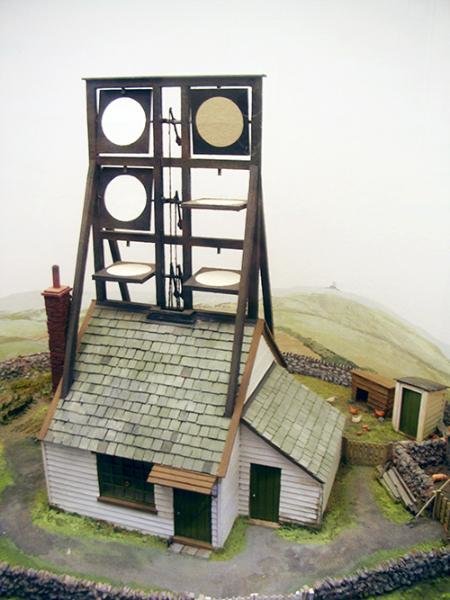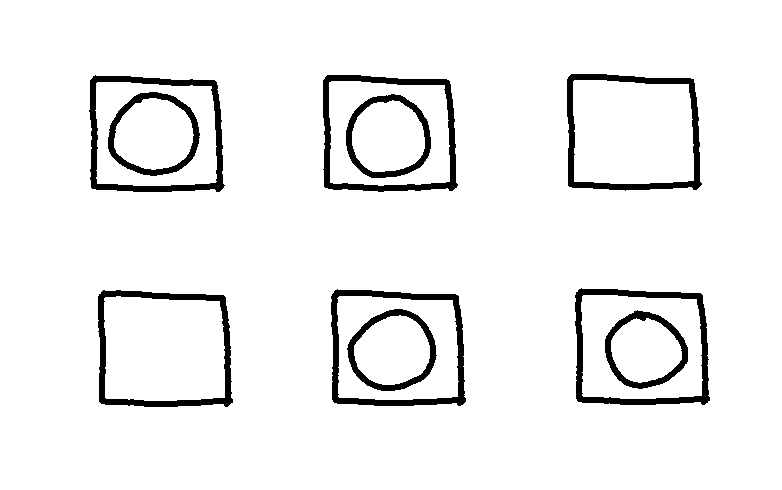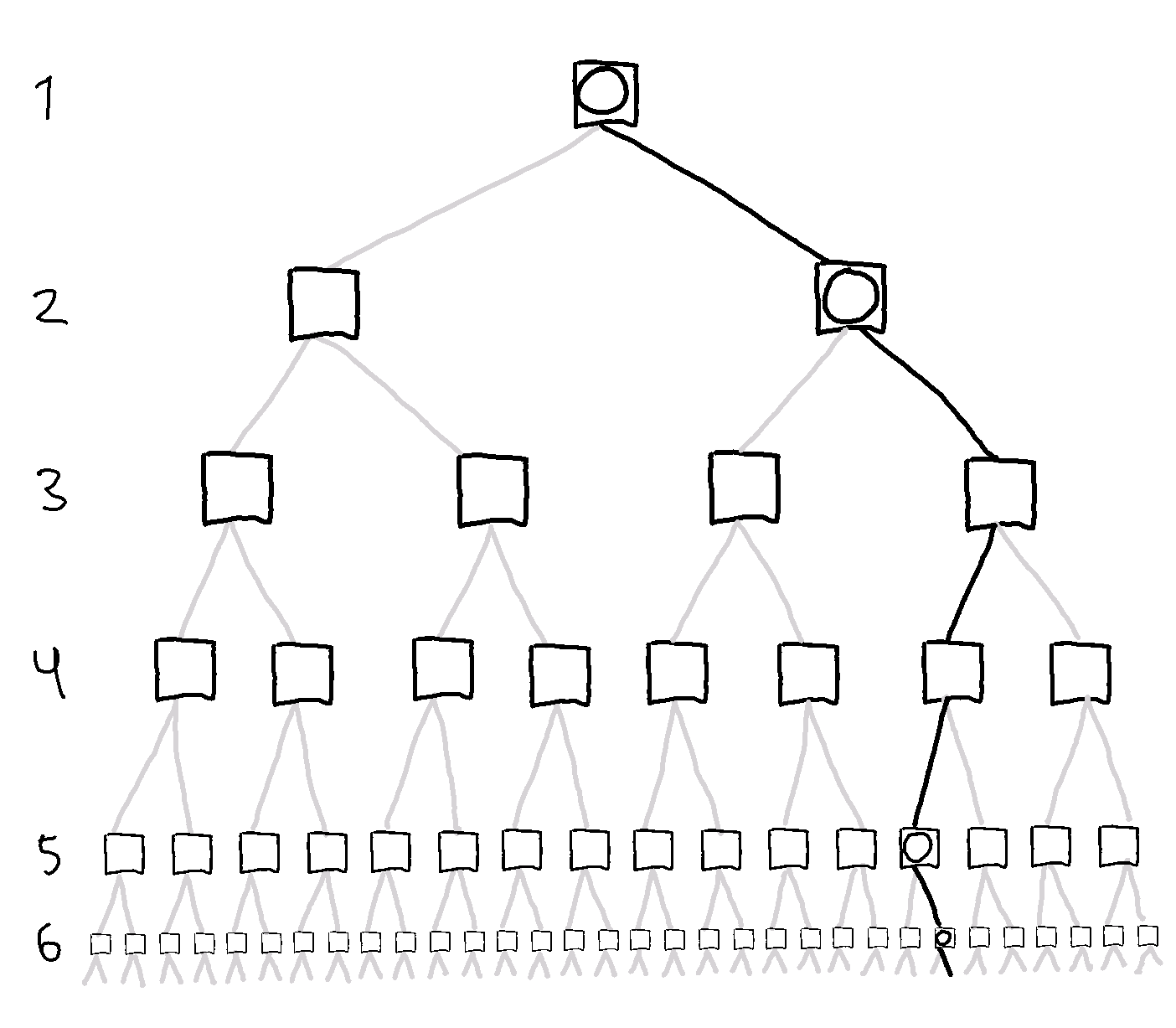Light Telegraphs
Using just a single difference to communicate the alphabet became prevalent in the 17th century.
The shutter telegraph was developed by Lord George Murray. Technology from 1795 demonstrates the use of a single difference to communicate anything.
Composed of six rotating shutters, in a two-by-three grid.
 [Image source](https://www.researchgate.net/publication/241060234_A_Brief_History_of_Early_Museums_Online)
[Image source](https://www.researchgate.net/publication/241060234_A_Brief_History_of_Early_Museums_Online)
Each shutter could be either open or closed.
That is 2 to the power of 6, which means 64 differences in total.
Example:

a decision tree visualization of this creates a path like this:

all the letters of the alphabet and a set of numbers are at the end of the decision tree.
So to get to B, the sequence would be
closed closed closed closed open